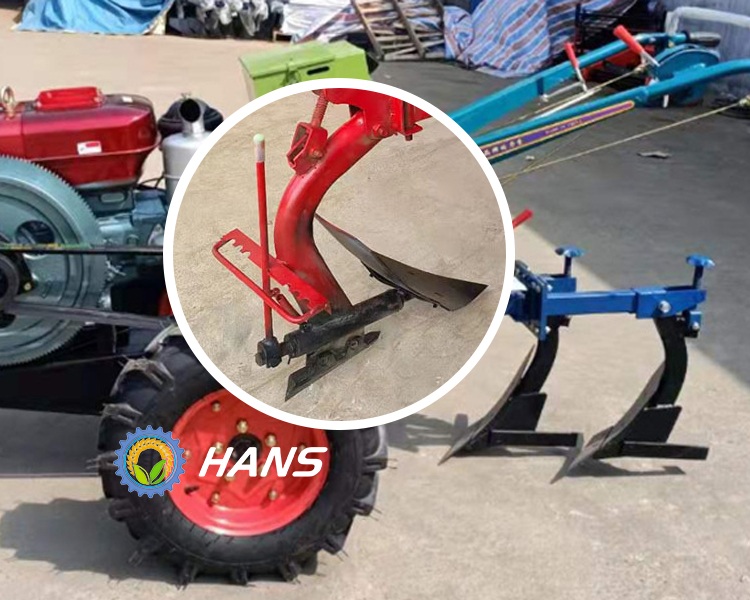
Single Plough
Definition: A single plough is equipped with one blade or share, designed to break up and turn over the soil in a single pass.
Advantages of a Single Plough:
- Simplicity: The single plough is typically simpler in design, making it easier to operate and maintain. With fewer moving parts, there is less risk of mechanical failure, and repairs are generally straightforward.
- Cost-Effective: Because of its simpler design and fewer components, a single plough is usually less expensive to purchase and maintain. This makes it an excellent option for small farms, home gardens, or individual users looking to keep initial investment costs low.
- Maneuverability: With only one blade, a single plough is often more agile and easier to handle in tight spaces. This makes it ideal for smaller plots, irregular fields, or when working around obstacles like trees or buildings.
Disadvantages of a Single Plough:
- Lower Efficiency: A single blade means more passes are required to cover the same area as a double plough, making it less efficient, especially on larger fields. The need for multiple passes can result in more time spent in the field.
- Limited Soil Turnover: While a single plough can break up and turn the soil, it may not be as effective at thoroughly aerating or mixing the soil compared to a double plough. This could be a disadvantage in certain farming systems that rely on deeper soil aeration for optimal crop growth.
Double Plough
Definition: A double plough features two blades or shares, allowing it to cover more ground and turn over more soil in a single pass, making it suitable for larger-scale operations.
Advantages of a Double Plough:
- Higher Efficiency: The main advantage of a double plough is its ability to cover more land in a single pass. This is particularly beneficial for larger fields or farms where time and labor are important factors. It reduces the number of passes needed, leading to faster plowing and less overall time in the field.
- Improved Soil Turnover: With two blades, a double plough can turn and aerate the soil more effectively. This helps to break up compacted soil, improve root penetration, and promote healthier crop yields, especially for deep-rooted plants that benefit from well-turned soil.
- Reduced Labor: Fewer passes with a double plough means less time and labor are required to prepare the soil. This can translate into cost savings and increased productivity, making it a valuable tool for larger farming operations.
Disadvantages of a Double Plough:
- Higher Cost: A double plough typically comes with a higher price tag, both in terms of initial purchase cost and maintenance. With more moving parts, there is a greater potential for breakdowns, which may lead to higher repair costs over time.
- Complexity: The more complex design of a double plough means it may require more maintenance and is more prone to mechanical issues than a single plough. Farmers may need to invest more time and effort into upkeep and troubleshooting.
- Less Maneuverability: Due to the larger size and dual blades, a double plough can be harder to maneuver in smaller, irregularly shaped fields. It is less suitable for tight spaces or small gardens compared to the more nimble single plough.
Conclusion: Single Plough vs. Double Plough
The choice between a single plough and a double plough depends largely on the size of the land and the type of farming operation. For small-scale farming, gardening, or when working in confined spaces, a single plough may be more practical due to its simplicity, affordability, and ease of use. On the other hand, for larger farms or commercial agricultural operations that require high efficiency and better soil turnover, a double plough offers the advantages of speed, effectiveness, and reduced labor, despite its higher initial cost and maintenance needs.
Ultimately, selecting the right type of plough will depend on the farmer’s specific needs, the scale of their operation, and the crops they are growing.plough.
